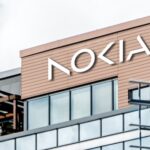NASA unveils lunar and Martian missions plans

In latest architecture update
As part of its ongoing effort to map out the future of space exploration, NASA has released a series of updated documents outlining its plans for lunar and Martian missions.
The newly released materials are part of the agency’s broader Moon to Mars strategy. This strategy aims to prepare for eventual crewed missions to Mars by laying the groundwork for long-term lunar exploration through the Artemis programme.
Following a detailed Architecture Concept Review, this year’s updates include revisions to NASA’s Architecture Definition Document. This document elaborates on the technical approaches and processes guiding the agency’s exploration plans. In addition, NASA has unveiled an executive overview and 12 new white papers covering key topics related to the journey from the Moon to Mars.
NASA’s Associate Administrator Jim Free stressed the importance of these documents. “NASA’s Architecture Concept Review process is critical to getting us on a path to mount a human mission to Mars,” Free stated.
“We’re taking a methodical approach to mapping out the decisions we need to make, understanding resource and technological trades, and ensuring we are listening to feedback from stakeholders.”
Fission power
Among the significant updates is a new white paper focusing on NASA’s decision to rely on fission power, a form of nuclear energy, as the primary energy source for crewed Mars missions. Fission power is largely unaffected by the harsh Martian day-night cycles or frequent dust storms, making it a reliable option for sustaining astronauts on the Red Planet’s surface.
Additionally, NASA has introduced a prioritised list of architectural decisions crucial to the Mars mission. The agency’s Moon to Mars architecture has added two new components: the lunar surface cargo lander and an initial lunar surface habitat.
The cargo lander will deliver essential items such as science and technology payloads, communications systems, and other logistics to support crewed and uncrewed operations on the Moon. Meanwhile, the habitat will house astronauts on the lunar surface, enabling extended missions and facilitating scientific exploration.
The revised Architecture Definition Document also expands on NASA’s decision-making process, offering insights into how early decisions will impact later stages of planning and execution. This process will help steer the development of key technologies needed to achieve the Moon to Mars objectives.
Catherine Koerner, Associate Administrator for NASA’s Exploration Systems Development Mission Directorate, highlighted the significance of these architecture decisions.
“Identifying and analysing high-level architecture decisions are the first steps to realising a crewed Mars exploration campaign,” Koerner noted.
“Each yearly assessment cycle moves us closer to ensuring we have a well-thought-out plan to accomplish our exploration objectives.”
NASA’s Moon to Mars strategy draws heavily on feedback from various stakeholders, including U.S. industry, academia, international partners, and NASA personnel. The agency releases a series of technical documents each year, including updated versions of the Architecture Definition Document and white papers addressing frequently discussed topics.
The Artemis programme, a cornerstone of NASA’s lunar exploration efforts, is integral to establishing a long-term scientific presence on the Moon. Through Artemis, NASA plans to return astronauts to the lunar surface, including the first international astronaut and set the stage for future human expeditions to Mars, which will benefit humanity.
Hero image: An artist’s Earth, Moon, and Mars concept. Credit: NASA












